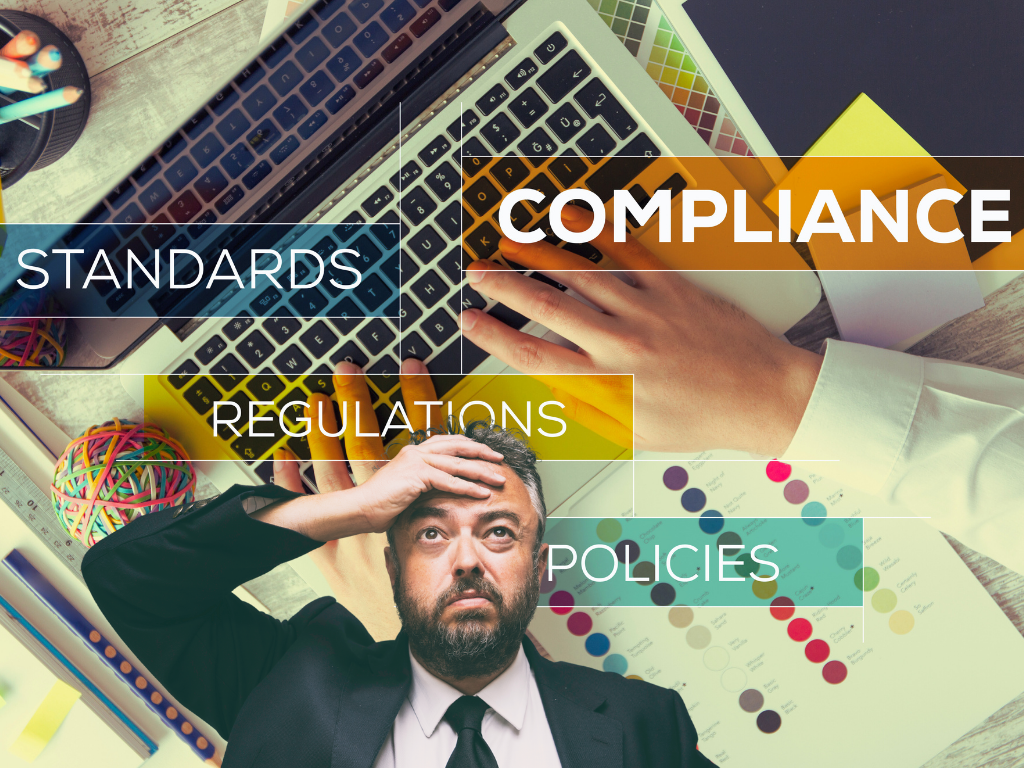A Better Way to Recruit Top Talent
We'll help you find the best talent in the industry, with the experience you want, so you can focus on running your business.
Our Services
Fractional HR Consulting
Senior-level human resources leadership, tailored to your pace and scale. Ideal for startups and growth-stage companies, we embed where needed and build systems that run without constant oversight.
Talent Acquisition Strategy
We go beyond recruiting. Our talent acquisition services are built around workforce planning, employer branding, and long-term team strength not just resumes and interviews.
Talent Development Advisory
We help you stop managing and start developing. Our approach creates systems that retain top talent by offering real growth not just check-the-box reviews.
Trends & Insights

Evelyn Judge here. In my years working with growing companies to help them maneuver through the often-complex world of HR and talent acquisition, one observation repeatedly surfaces. It’s about a very common, often unquestioned, phrase in nearly every job description: "X years of experience required." We’ve all written it, read it, and based significant decisions on it. It seems straightforward enough, a simple way to convey a role’s seniority and filter a pool of applicants. But if we’re being entirely frank, this long-held tradition frequently creates more obstacles and missed opportunities than it resolves for a thriving, expanding business. Consider for a moment the talent we might be inadvertently overlooking. When a job description specifies "3-5 years of experience," what message does that truly send? An accomplished professional with seven or eight years under their belt might quickly dismiss the opening by assuming it’s beneath their capabilities or that the company isn't seeking their level of strategic contribution. Consequently, a leader who can bring immediate impact, mentor others, or navigate complex challenges effortlessly will simply move past your opportunity. Conversely, think of the individual who, through sheer drive, accelerated learning, or intense project exposure, has gained profound capabilities in two years that others take five or six to acquire. A rigid "minimum of three years" requirement effectively closes that door. We’re not just potentially overlooking raw ability; we're often prioritizing a calendar count over demonstrated skill and valuable perspective. It’s not simply about time served; it’s about what a candidate has mastered, the challenges they've overcome, and the tangible results they can deliver. Then there’s the operational reality of compliance – an area few companies consider until it becomes, well, a compliance issue. While needing a level of experience is perfectly sensible, relying on an overly prescriptive, numerical range can sometimes, unintentionally, invite questions concerning age discrimination or other biases down the line. For any growing company, proactively managing these subtleties is simply good, pragmatic business. It’s about building a robust foundation that allows you to focus squarely on growth, free from avoidable legal entanglements. Ultimately, a narrow focus on numerical "years of experience" can restrict access to a broader talent pool, allow a calendar to overshadow genuine capability, and introduce unnecessary risk. It's a practice inherited from a different era of hiring that often fails to serve the agility and specific needs of today's ambitious companies. My team and I, when we partner with leaders, delve deeper. We ask: What problem does this role truly address? What specific contributions must it make? What core skills and achievements are non-negotiable? If a certain amount of experience is genuinely critical, we articulate it clearly: "X+ years of demonstrated proficiency in [specific area]." This sets a necessary floor without erecting an invisible ceiling that could deter invaluable expertise. We aim to articulate the true challenge and opportunity to attract individuals driven by impact rather than a generic checklist. It boils down to intelligently designing your talent gateway. Ensure it clearly invites the right people in, rather than unintentionally diverting them elsewhere.

In boardrooms and offices across the country, leaders wrestle with the same question: “How do we attract the right people without breaking the budget?” It’s tempting to assume that higher salaries are the answer. But experience shows that money alone rarely wins the loyalty, engagement, and performance that truly make an organization thrive. The real differentiator lies in the Total Value Proposition (TVP), the way culture, flexibility, benefits, and growth opportunities come together to create a workplace that people want to join and stay with. Each element tells a story about what the organization values, how it invests in its people, and the kind of experience it delivers day to day. Consider culture as the sum of interactions, decisions, and behaviors that define how work gets done. Teams that operate with transparency, accountability, and mutual respect naturally inspire a sense of commitment. Employees understand that their contributions have an impact, and that understanding keeps them engaged even when competitors offer higher pay. Flexibility reinforces that trust. Giving people the autonomy to manage schedules or work arrangements that fit their lives shows respect for them as whole individuals. This trust creates ownership and focus, and it signals that the organization measures results, not just hours at a desk. Flexibility is a strategic tool that strengthens loyalty and performance while keeping compensation manageable. Benefits further shape the employee experience. Thoughtful programs, supporting wellness, skill development, paid time off, insurance, or life balance, communicate that the organization invests in its people beyond the role itself. They demonstrate that the company views employees as partners, not just resources by fostering engagement and retention in ways that money alone cannot buy. Growth opportunities complete the picture. When employees know they have a clear path to advancement, their ambition is recognized and nurtured, and they can take on more responsibility. Over time, they commit more deeply. Investing in internal development reduces reliance on external hires, keeps knowledge within the organization, and builds a workforce capable of navigating future challenges. Crafting a Total Value Proposition is about more than adding perks. It is a deliberate choice about how an organization demonstrates what it values most, how it engages its people, and how it sustains performance over time. Leaders who get this right attract the talent they need, retain high performers, and build a resilient, capable workforce, without resorting to unsustainable salary increases. Take a step back and look at your Total Value Proposition. How do culture, flexibility, benefits, and growth combine to shape the experience of working in your organization? A thoughtful, intentional approach will help you attract and retain top talent while keeping your workforce engaged, resilient, and aligned for long-term success. Let’s talk.

[Atlanta, GA] — [09/20/2025] - Artificial intelligence has become central to modern hiring, automatically screening, ranking, and even rejecting resumes before a human sees them. While this technology can streamline recruitment, it also carries hidden risks: Qualified candidates may be filtered out for minor reasons, and companies may lose the talent they need without realizing it. “Algorithms are making decisions that can profoundly affect the quality of your hires,” says Evelyn Judge, managing partner and executive-level HR consultant at Frank Rally Post. “If you haven’t examined how AI influences your hiring process, you may be missing key candidates, while your competitors quietly bring them onto their teams.” Judge works directly with startups and growing companies to audit hiring processes, align them with business goals, and ensure AI supports your recruitment strategy. Her approach focuses on clarity, compliance, culture, and leadership enablement, helping organizations efficiently attract and retain the right talent. The Reality for Companies Today Strong candidates are slipping through the cracks. AI filters can unintentionally exclude high-performing or unconventional talent. Process gaps create risk. Outdated hiring systems can delay recruitment and reduce competitiveness. Your employer brand matters. Candidates notice clunky processes and may take their skills elsewhere. “ A mismanaged hiring process directly impacts business performance ,” Judge says. “Even a small flaw in the system can prevent the right candidate from joining your team at the right time.” How Evelyn Can Help Evelyn’s services are designed to integrate directly with an organization: Fractional HR Consulting: Executive-level HR support without full-time overhead, including strategic people planning, compliance, and culture development. Talent Acquisition Strategy: Define the roles you truly need, optimize employer branding, and streamline hiring processes. Talent Development Advisory: Develop top performers, establish succession planning, and embed feedback systems that improve retention. Take Action Today Every day your best candidates are filtered out is a day your competitors move ahead. Schedule a confidential consultation with Evelyn Judge to audit your hiring process, uncover hidden gaps, and implement strategies that ensure the right talent reaches your team. Reserve your session today at www.frankrallypost.com/contact Or call (203) 820-1720 and let’s talk. About Frank Rally Post Frank Rally Post is a specialized Human Capital Organization serving a nationwide client base with offices in Atlanta, GA, New York, NY, and Stamford, CT. We provide retained HR, Talent Acquisition, and Recruitment Services designed for small to mid-sized companies. Our expertise spans direct hire and executive search in the Accounting, Finance, and HR sectors. We deliver access to top-tier talent without upfront costs through a relationship-centric, contingency-based approach. By quickly assessing organizational needs and implementing effective processes, we empower business leaders to focus on growth while we manage HR complexities with precision. Frank Rally Post is committed to helping clients turn HR challenges into opportunities, positioning their businesses for sustainable success. Media Contact Evelyn Judge FRANK RALLY POST Email: evelyn@frankrallypost.com Phone: 203-820-1720 Website: www.frankrallypost.com

In every organization, hiring is framed as a win: The role is filled, the team feels complete, and leaders expect the business to run more smoothly. But the reality is that the hiring decision is only the starting line. The following three months are far more consequential than most organizations recognize. This 90-day window quietly determines whether your new hire becomes a long-term asset who delivers measurable return on investment, or whether they drift into disengagement, misalignment, or even an early exit. As someone who has spent decades helping companies strengthen their talent strategy, I can tell you that onboarding is not a formality. It is the bridge between potential and performance, and too many businesses leave that bridge unfinished. Why the First 90 Days Matter More Than You Think Research paints a clear picture. Most new employees need six to eight months to reach full productivity. Without an intentional onboarding process that timeline stretches and, in some cases, never recovers. Even more concerning, surveys consistently show that employees form a lasting impression of their employer within their first 90 days. That impression directly influences their engagement, likelihood to stay, and ultimately, how quickly they contribute at the expected level. From an ROI perspective, the stakes are high. The cost of replacing an employee who leaves within the first year can reach 30-50% of their annual salary. For leadership teams looking to optimize budgets, overlooking onboarding is not just a cultural misstep; it’s a financial one. What Onboarding Really Impacts Strong onboarding is not about handbooks or one-time orientation sessions. It directly affects three drivers of long-term ROI: 1. Role clarity. New hires who understand what success looks like in their first 30 days are significantly more likely to perform at a higher level by the end of their first year. Ambiguity, on the other hand, leads to hesitation, errors, and slower integration. 2. Connection. Employees don’t leave companies; they leave environments where they never felt they belonged. Early relationship-building with managers, mentors, and peers fosters engagement and commitment, which directly lowers the attrition risk. 3. Knowledge transfer. Every organization has unwritten rules, workflows, and context that can’t be captured in a job description. Without a structured approach, that knowledge takes months to absorb, which equates to valuable time when productivity stalls. When these elements are missing, leaders may misinterpret poor performance as a hiring mistake. In truth, it is often a process mistake. How to Shorten the Ramp-Up Curve Effective onboarding aims not to rush new hires but to shorten the time between arrival and meaningful contribution. Practical, evidence-based steps make this possible: Start before day one. Pre-boarding, sharing culture insights, role expectations, and simple administrative tools before the official start date, reduces first-week overwhelm and allows employees to arrive ready to engage. Define 30/60/90-day milestones. General orientation doesn’t provide direction. Clear, staged goals help new hires measure progress and give managers a framework to assess development in real time. Assign a peer or mentor. Formal mentorship or buddy programs accelerate learning by providing safe channels for questions and reducing uncertainty. This is particularly valuable in hybrid or remote settings where informal hallway conversations don’t exist. Invest in manager check-ins. A new hire’s manager is the most critical factor in retention. Structured weekly or bi-weekly conversations in the first three months surface misalignments early and reinforce expectations before they drift. Enable with the right tools. Access to knowledge management systems, project platforms, and communication channels ensures new employees aren’t left to navigate fragmented information. Technology can be a critical equalizer in reducing ramp-up time. What Leaders Should Ask Themselves I often advise executives to pause and evaluate their onboarding process with a straightforward lens: If I joined this organization tomorrow, how quickly would I understand how to succeed? Would I know exactly what is expected of me in my first 30, 60, and 90 days? Would I feel connected to the team and confident in where to go for support? Would I have the tools and knowledge needed to perform, or would I spend weeks piecing things together on my own? If the honest answer to these questions is “NO,” then the organization is not only slowing productivity but also quietly eroding the ROI of every new hire. Making the First 90 Days Count The 90-day window is not a grace period. It is the most critical stage in the employee lifecycle. Done well, onboarding builds trust, accelerates contribution, and maximizes the long-term value of your investment in talent. Done poorly, it prolongs ramp-up time, drains resources, and often results in preventable turnover. Leaders who recognize this shift their focus from filling seats to building momentum. That perspective benefits new employees and strengthens the entire organization. If you’re ready to rethink how your organization approaches the first three months, let’s talk.

When business leaders think about risk, their minds usually jump to financial audits, cybersecurity, or supply chain disruptions. Rarely does HR make the list of high-risk areas. But the truth is, one outdated job posting, one poorly documented termination, or one misstep in an interview can expose your company to serious legal and financial consequences. That’s where Employment Practices Liability Insurance (EPLI) comes in, the insurance policy you didn’t know you needed. The Hidden Liabilities in HR Practices Most executives don’t realize how costly small HR compliance mistakes can be: Job descriptions that discriminate. Writing “3-5 years of experience” sounds harmless, but it’s legally problematic. That wording could be considered exclusionary to candidates with more or fewer years of experience. The compliant version? “3+ years.” Interview questions you can’t ask. Anything that touches on age, gender, family status, or medical conditions is off-limits. Yet I still see hiring managers making these mistakes. Data retention risks. What employee information you keep, where you store it, and how long you hold it matter. Mishandling personal data creates exposure. Weak documentation. Terminations, performance reviews, and disciplinary actions all need proper documentation. Without it, companies are wide open to wrongful termination claims. These aren’t isolated issues. They’re patterns I see repeatedly when auditing HR practices. And in today’s environment, one small misstep can trigger a lawsuit that drains time, money, and reputation. What EPLI Covers and Why You Can’t Ignore It EPLI protects companies against claims from employees, former employees, or even job applicants. Coverage typically includes: Wrongful termination Discrimination (age, sex, disability, etc.) Sexual harassment Retaliation claims Mismanagement of employee data or records Without coverage, even defending against a frivolous claim can cost six figures. With coverage, the financial hit is managed, but here’s the reality: insurance doesn’t stop the claim from happening. It just pays for the mess after the fact. That’s why EPLI and HR compliance go hand in hand. Compliance Is Prevention Think of HR compliance as the seatbelt and EPLI as the airbag. Both protect you, but in very different ways. Compliance reduces your risk of ever needing the policy. By aligning your hiring, interviewing, and documentation practices with the law, you close the gaps that cause most lawsuits. EPLI is the back-up. It’s there if, despite your best efforts, something slips through. In my work, I help companies audit their HR practices and identify the blind spots leaders often miss. For example: Updating outdated job postings and hiring protocols Training managers on what they can and can’t ask in interviews Setting up compliant documentation and record-keeping processes The result? A lower chance of being sued, lower insurance premiums, and often significant cost savings. I routinely save companies 30–40% on their hiring and HR costs while helping them avoid liabilities they didn’t even know existed. Why Business Leaders Should Care Leaders are often surprised when I say this: HR compliance isn’t about being “politically correct.” It’s about protecting your business. It protects your budget. Legal fees and settlements are one of the fastest ways to erode profitability. It protects your people. Transparent, compliant processes build trust and credibility with employees. It protects your leadership. As a CEO, CFO, or HR leader, you’re responsible for the practices under your roof, even if you weren’t aware of them. Ignoring compliance is like driving without insurance. You might be fine until you’re not. EPLI Is Only Half the Story EPLI is the insurance policy you didn’t know you needed. However, it works best when paired with strong HR compliance practices that keep you out of the courtroom in the first place. If you’re unsure whether your hiring, interviewing, and documentation practices are compliant or want to understand how EPLI fits into your risk management strategy, now is the time to take a closer look. Protect your business before you need protection. Let’s talk.

After three decades in talent strategy, I've seen the economy rise and fall. I’ve helped organizations weather recessions, respond to industry disruption, and evolve through digital transformation. But the talent challenges we face today amid a wave of AI integration and workforce dropout are unlike anything I’ve seen before. In an age where artificial intelligence can suggest your next meal, coach you through a breakup, or write a perfectly acceptable email, one thing is becoming clear: convenience has come at the cost of connection. And nowhere is that more evident than in the way we hire, retain, and engage people. Sure, it’s easier than ever to automate. But in that convenience, we risk forgetting something fundamental: to begin a new relationship, personal or professional, human connection goes a long way. The Real Cost of a Workforce in Retreat In 2025, the U.S. talent shortage hit historic highs. According to Manpower Group, nearly 3 in 4 employers reported difficulty filling key roles. That’s not just a statistic; it’s a signal. And it comes with a price tag. An open role can cost a company more than $10,000 in lost productivity, stalled projects, and added strain on existing staff. Over time, these vacancies don’t just delay business; they erode morale. Burnout becomes inevitable, turnover rises, and the cycle continues. But let’s be clear: this is not simply a labor shortage. It’s a trust shortage. It’s an engagement shortage. It’s a systems problem. We’re seeing a quiet but powerful movement; millions of working-age adults choosing not to participate in traditional employment. Not because they’re lazy, but because they’re disillusioned, disengaged, or just done with outdated hiring practices that don’t reflect today’s world. What’s Driving the Dropout? There’s no single culprit. It’s a perfect storm of structural issues: 1. AI-Filtered Hiring That Misses the Human Automation tools promise speed, but often at the cost of nuance. MIT Sloan Management Review states that many screen out up to 60% of applicants before a human ever sees a résumé. That’s not efficient; that’s exclusion. 2. Lack of Human Connection Digital systems have turned hiring into a transactional experience. Candidates are ghosted, sometimes after multiple interviews, even after verbal offers. According to Indeed, 40% report being ghosted after the second or third interview. That kind of treatment erodes trust, and reciprocation follows. 3. Unrealistic Job Requirements Some organizations still post "wish lists" instead of job descriptions. They want a unicorn, but offer a pony’s salary. The result? Positions go unfilled for months while teams limp along without support. 4. Shifting Worker Values More workers are stepping away for mental health, family, or freedom. Freelancing, entrepreneurship, and remote work are no longer side gigs but full-time realities. The traditional 9-to-5 model doesn’t inspire loyalty anymore. Where Do We Go from Here? We can’t teach our way out of a human problem. To move forward, we must restore connection, purpose, and adaptability to our approach: Real Conversations: Go beyond the bots. Bring back live interviews. Let people be people. Internal Development: Upskilling and reskilling aren’t just nice-to-haves but survival strategies. Better Candidate Experience: Timely feedback and transparent communication are the new currency of trust. Purposeful Flexibility: Hybrid or remote isn’t a perk. It’s a strategy to meet people where they are. This Isn’t a Pipeline Problem. It’s a People Problem. The bottom line? HR is changing. The old rules don’t apply, and neither should our old assumptions. To stay competitive, we must pivot toward people solutions strategies rooted in attraction, engagement, flexibility, and cost awareness. It’s time to stop thinking of hiring as a transaction and start seeing it for what it is: the beginning of a relationship. Let’s Rethink the Way We Work, Together If your organization feels the strain from empty seats, exhausted staff, or outdated hiring systems, there’s a way forward. And it starts with a conversation.

After 30 years advising organizations through economic shifts, cultural reinventions, and leadership resets, I’ve learned this: The companies that thrive don’t just manage talent; they grow it. Yet that distinction, management vs. development, continues to blur, often at significant cost. Too many organizations still operate with the outdated belief that once someone is hired and onboarded, the people work is done. But people aren’t pipelines. They’re not plug-and-play assets. And no amount of tracking software can replace a strategy that meets humans where they are. Talent Management Is Not the Same as Talent Development Let’s be clear. Talent management is about filling a need. It’s job descriptions, performance reviews, and compliance. Talent development is about building a future. It’s mentorship, feedback, and purposeful stretch. You need both. But if you’re managing without developing, you’re just cycling people through a system that doesn’t evolve. That’s where most organizations break down. They chase efficiency at the cost of retention. And they wonder why the top talent they worked so hard to attract quietly disengages or walks out the door. Managing People Like Processes Is a Leadership Mistake Here’s what I see too often in the field: Managers promoted for operational excellence, not leadership capability Annual reviews are treated like a box to check, not a growth tool Career paths are limited to “up or out” when some employees want deep, not just up These aren’t talent issues. These are system design issues. And systems don’t fix themselves. Development Is a Strategic Investment, Not an HR Perk True talent development isn’t training. It’s not a retreat. It’s not just soft skills. It’s designing environments where: Feedback is frequent, not feared Success is clearly defined, then redefined, as people grow Employees know they matter even when they’re not chasing promotions I help organizations build these environments without locking them into rigid, outdated contracts. As an external partner, I can embed where needed, advise at a strategic level, and stay as lean or hands-on as the moment demands. Flexibility is not the absence of structure; it’s the presence of responsiveness. Your Best People Want Growth, Not Just a Job If your high performers are disengaging, it’s rarely about compensation. It’s about clarity. It’s about the gap between their capabilities and what your systems allow. When you develop people, they stay. When you manage them like tasks, they leave. Ready for a People Strategy That Evolves with You? If you’re still treating talent like a pipeline to fill, I’d invite you to pause. What you likely need isn’t another hire. It’s a rebuilding of how your organization grows people. Let’s design something better together.

After decades of working in high-growth environments where chaos is constant and structure is scarce, one thing has become clear: success doesn’t come from theory. It comes from execution under pressure. I’ve partnered with founders, executives, and decision-makers who weren’t looking for another framework. They were looking for traction. For truth. Someone who could step in fast, assess accurately, and act decisively. That’s where I operate best. When companies hit a wall with their people strategy, it’s rarely because they don’t care. It’s because they’re misaligned, and moving without clarity is the surest way to stall progress. Fractional HR consulting and talent acquisition aren’t shortcuts. They’re the smart, flexible, high-impact solutions that modern companies need when growth is real, time is tight, and stakes are high. What Is a Fractional HR Consultant? A fractional HR consultant is a senior-level human resources partner who joins your team without the drag of full-time overhead. The title may say “fractional,” but the impact is anything but. Fractional doesn’t mean fractional quality. As one client put it, “You’re getting someone part-time with full-time benefits.” That’s the point: high-level, embedded leadership that knows how to stabilize the chaos without becoming part of the overhead. This is not a temp. It’s not a freelancer. It’s a strategic partner who knows how to build systems, guide decisions, and protect momentum, especially when your business doesn’t have time for a slow hire or a steep learning curve. I’ve seen it firsthand: startups need infrastructure without corporate bloat. Mid-sized companies in transition need a trusted hand without long-term risk. What both need is someone who can deliver results without babysitting. Talent Acquisition Is Not Just Recruitment Let’s be honest: too many companies confuse talent acquisition with recruiting. It’s not the same thing. Recruiting fills seats. Talent acquisition builds engines. I don’t just screen resumes. I help you define who you actually need, why, and how they’ll move your business forward. This includes: Workforce planning aligned to real goals Employer brand positioning that reflects who you are Diversity strategies that aren’t just for show Internal mobility that strengthens, not drains, your team When this is left to overstretched managers or fragmented HR teams, the result is chaos in disguise: inconsistent hiring, poor candidate experiences, and quiet attrition. As a fractional talent strategist, I bring order to the process and strategy to the decision-making. I don’t just plug holes. I identify the patterns slowing you down and fix them at the root. And yes, my background is heavier in talent acquisition than traditional HR, because if you get the people part right, most of the other pieces fall into place. Why This Model Works Growing companies face pressure from all sides. Scale fast. Stay lean. Retain talent. Stay compliant. Keep culture intact. Oh, and don’t miss your hiring goals. Sound familiar? Full-time executives aren’t always the answer, and you know what? Doing nothing is a bigger risk. Fractional HR offers a better path: Cost Efficiency: Executive insight without the executive price tag Speed and Focus: You won’t wait months for results Objectivity: I’m not there to play politics. I’m there to move the needle Scalability: On-demand support that adapts to your needs Expertise That Shows Up Ready: No fluff, no filler, just clarity and execution Let’s be real. Everyone wants to step in when things are going well. I show up when it’s messy. And I make it better. When to Consider Fractional Support Not every business needs a full-time CHRO. But many need senior-level expertise, urgently and consistently. You might need fractional support if: You’re hiring reactively, not strategically. Your best people are leaving, and no one knows why. Your managers are struggling with people leadership. HR feels like a cost center, not a value driver. You’re growing fast, but your systems aren’t keeping up. And if you’re worried about long-term contracts, don’t be. My model is designed to flex. I believe in being effective, not dependent. If it’s not working, there’s always a way out. That’s how confident I am in what I bring. A Strategy Built to Flex Rigid models don’t work in fast-moving environments. That’s why I build talent strategies that move with you, not against you. I embed when needed, step back when the systems are running, and stay lean or hands-on, depending on the moment. There are no bloated retainers, junior handoffs, or red tape. Because you don’t just need to move, you need to move in the right direction. And that’s the difference between staying afloat and scaling with purpose. Let’s Redefine Growth If your systems are stalling while your headcount is rising… If your retention is slipping and no one can explain why… If recruiting feels like whack-a-mole and not a strategy… Then the problem probably isn’t your people; i t’s your structure. Let’s fix that. Let’s build a talent and an HR foundation strong enough to support what you’re building and smart enough to get out of the way when it's working. Because when your people strategy works, your business flies.


